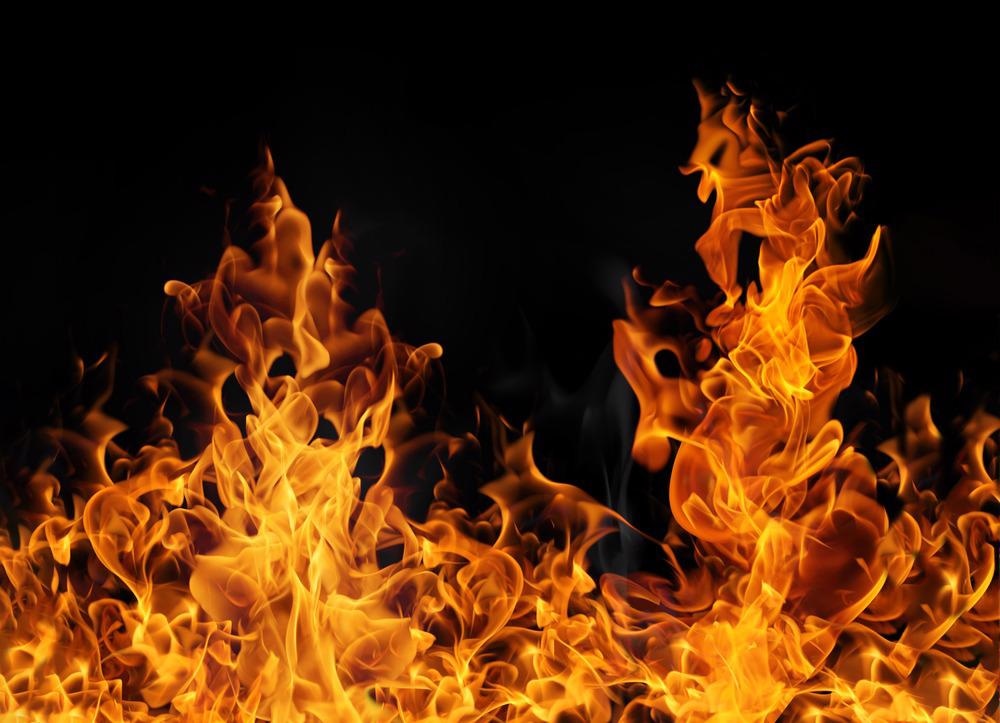A novel nanoscale catalysis-based flame retardance system was developed and integrated into a polypropylene polymer matrix in a research paper published in the journal Materials Letters. This study offered a unique joint catalyzed charring technique that combines the benefits of nanoscale flame retardance technologies with catalyzed charring.

Study: An innovative binary nano-catalytic flame retardant system for improving the fire safety performance of polypropylene. Image Credit: prapann/Shutterstock.com
Increasing Flame-Retardance of Polypropylene Polymer
Polypropylene (PP) polymer burns completely without leaving any apparent char. Atoms of carbon in the polypropylene primary chains are burned to form gas-phase chemicals like carbon dioxide and carbon monoxide.
As a consequence, if the C atoms are catalytically trapped in the form of char, the burning of polypropylene is slowed, leading to a slower speed of heat discharge. As a result, catalyzed carbonization has emerged as a new flame retardance method.
The catalyzed charring impact of typical transition metals on polyolefin, on the other hand, is only marginally acceptable. Thus, establishing a particularly effective nanoscale catalyzed charring and flame retarding technology is critical for improving flame retardance in polymers.
Enhancing Catalytic Charring by Using Solid Acids
Several solid acids, like organic-modified clay or zeolite, have been used in conjunction with charring catalysts. These combined catalysts have been successful in increasing polymer char production.
The Role of Graphene
Graphene has received a great deal of interest in the flame retardance industry due to its 2D shape. It has many binding spots for immobilizing foreign nanoparticles (NPs).
Graphene is widely recognized for its lamellae structure, and the highly-dispersed graphene contributes to the physical barrier, leading to a slower rate of heat loss. Reduced graphene oxide (RGO) nanofilms are coated with NPs of phosphomolybdic acid (PMoA) with acidic spots.
The RGO-PMoA functions as a PP pyrolytic catalyst. RGO-PMoA's proton acid sites engage PP major chains, promoting aromatization and dehydrogenating of PP breakdown products.
Thus, once a little quantity of RGO-PMoA is added, additional light hydrocarbons (HCs) and aromatics are produced. RGO-Ni dehydrogenates and reassembles such aromatic and tiny molecules to generate additional charring layers. Organic breakdown chemicals with smaller carbon numbers and aromatic components are more likely to promote graphitic char formation.
What was the Research Methodology?
In this study, on the basis of decorated surface of reduced graphene oxide (RGO), a new catalyzed charring and flame retarding system was devised. The impact on the burning behavior of PP was then investigated. The mechanics of catalytic charring and flame retardancy were shown.
The polypropylene polymeric composite containing 1% RGO-Ni and 1% RGO-PMoA was discovered to have the highest char residue and the greatest flame retardance characteristic. The optimal proportion of RGO-Ni and RGO-PMoA affects catalyzed charring and flame retardance.
How does the Charring Process Contribute to Flame Retardance?
Transition metals with catalyzed charring properties include nickel, iron, and cobalt. However, the solitary element of transition metals is not conducive to char production. Graphene nanofilms provide microscale reactors and carbonizing templates with barrier effects.
The well-distributed graphene, which offers suitable settings for catalyzed carbonization, slows the discharge of gaseous breakdown products of polypropylene. Rather than complete burning to gaseous components without leaving any residue, the flammable polypropylene chains are charred catalytically into the thermally stabilized and non-combustible char residue.
As a result of barrier effects on heat and mass transfers, the generated carbon-based layer coating the surface inhibits the burning of the components within. As a result, RGO-PMoA complements RGO-Ni to increase the flame retardance of polypropylene.
Highlights of the Study
The surface properties of reduced graphene oxide nanofilms were altered by adding Ni and PMoA NPs. The chemical makeup, content, and structure were all thoroughly investigated. PMoA NPs were bound to the RGO surface by electrostatic contact. These graphene-based nanoparticles were evenly distributed throughout the polypropylene matrix.
On polypropylene, the hybrid catalyst (RGO-PMoA: RGO-Ni=1:1) showed outstanding catalyzed charring and flame retarding properties. Owing to its proton acidic nature, RGO-PMoA broke down polypropylene catalytically into further aromatics and finer molecules, which were susceptible to catalyzed charring by RGO-Ni.
The properties of this hybrid catalyst serve as a reference for developing high-performing polymeric nanocomposites with outstanding flame retardance and minimal nanofiller doping.
Reference
Wang, S., & Zhang, Y. (2022). An innovative binary nano-catalytic flame retardant system for improving the fire safety performance of polypropylene. Materials Letters. Available at: https://doi.org/10.1016/j.matlet.2022.132663
Disclaimer: The views expressed here are those of the author expressed in their private capacity and do not necessarily represent the views of AZoM.com Limited T/A AZoNetwork the owner and operator of this website. This disclaimer forms part of the Terms and conditions of use of this website.